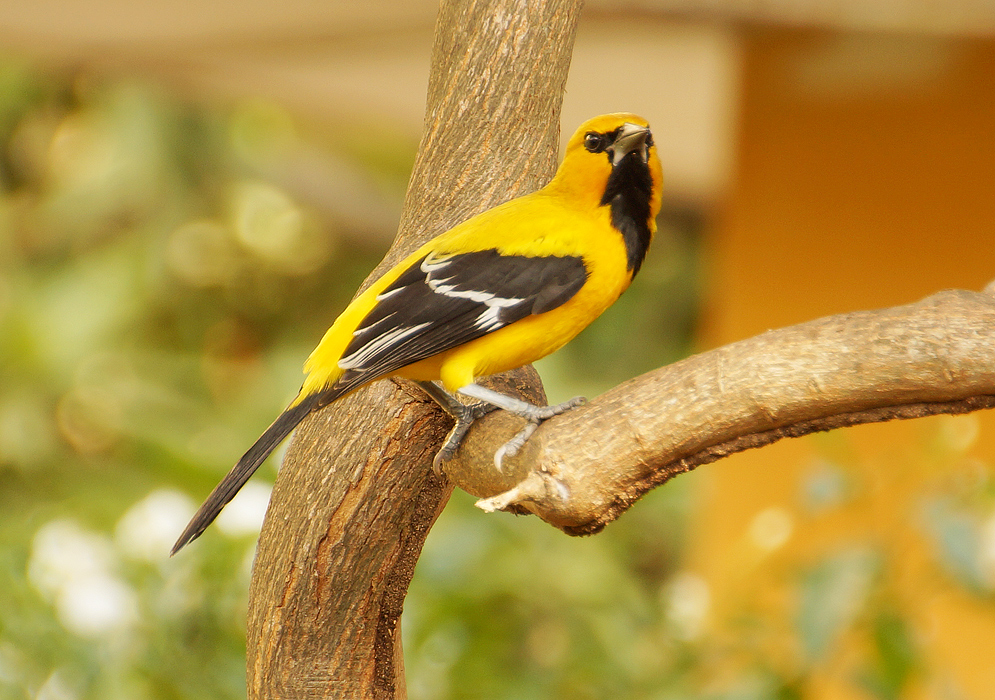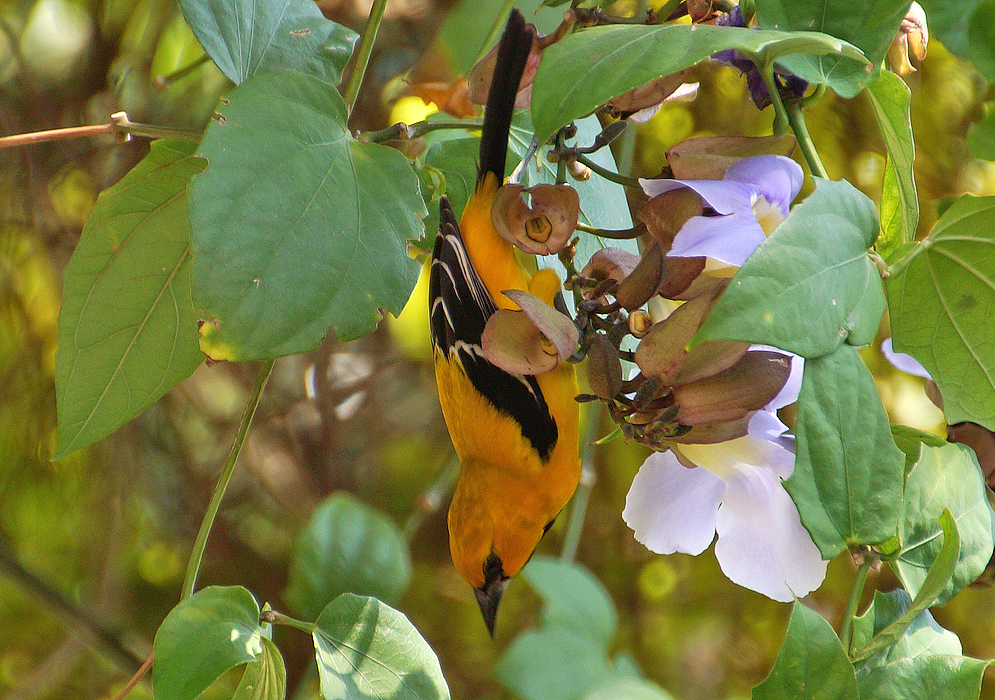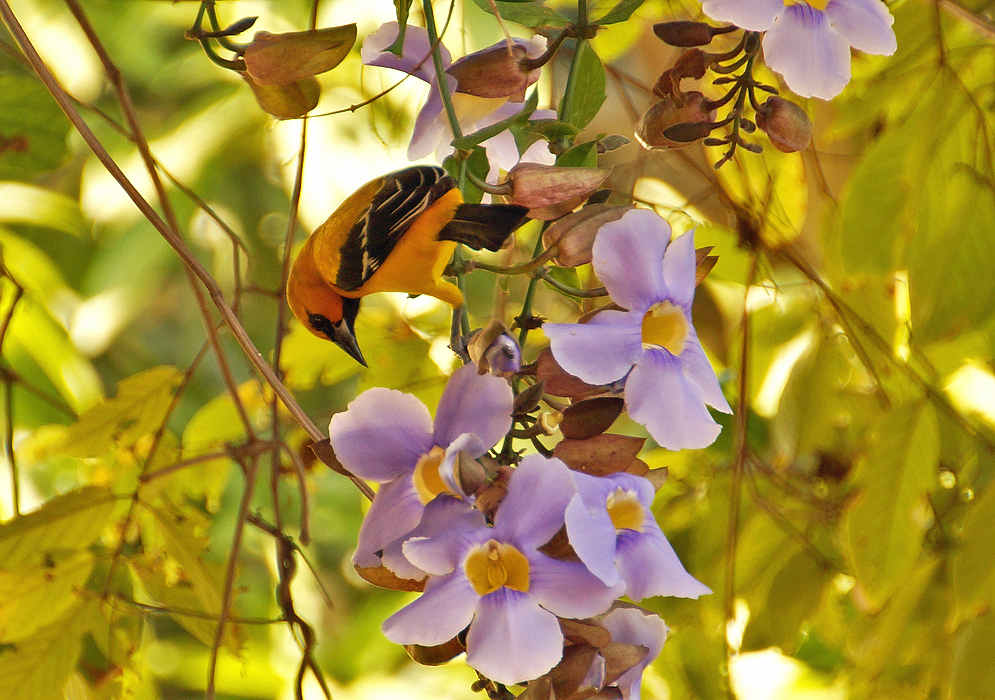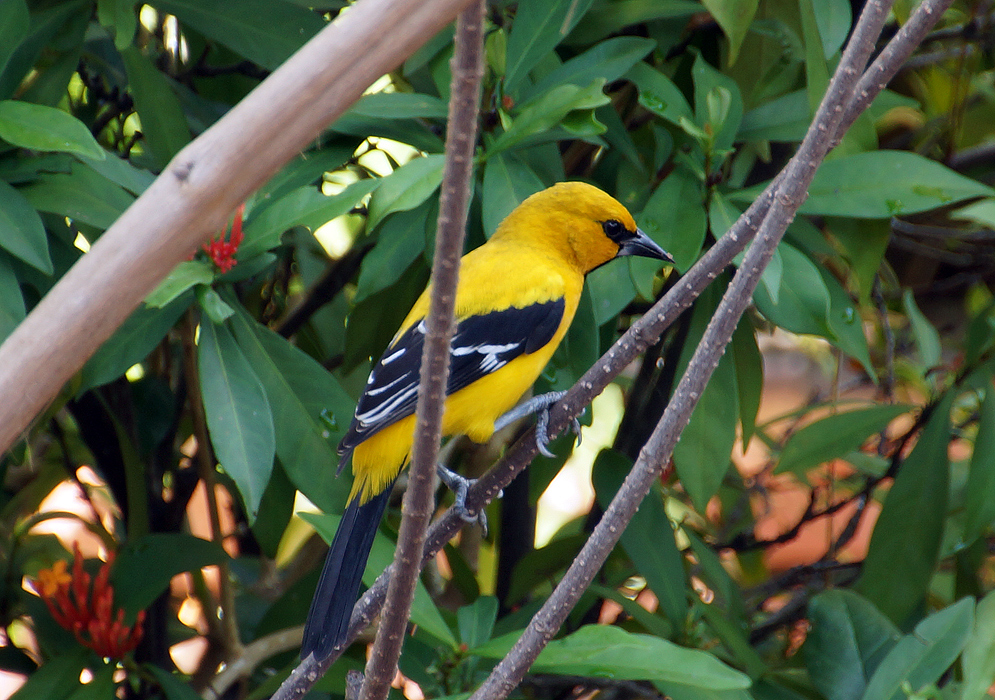This post has 11 Simple Fields-fields attached. Show fields.

The Yellow Oriole, is primarily found in northern South America. Notably adaptable, they reside in a variety of habitats ranging from open woodlands and scrublands to subtropical and tropical dry forests, mangrove vegetation, savannas, and dry shrublands. Interestingly, they are also comfortable in human-modified environments like plantations, rural gardens, and urban areas. Adult Yellow Orioles typically measure about 7.9 to 8.3 inches in length and weigh around 1.3 ounces. Their striking yellow plumage is a defining characteristic, with the adult males sporting a black eye mask, a thin black throat line, black tail, and black wings accented with a white wing bar and some white feather edging. The females are similar but slightly duller, while juvenile birds have an olive-tinged yellow back and lack black facial markings. Their diet is diverse, consisting mainly of large insects but also including nectar and various fruits such as berries, cherries, mangoes, and bananas. The species constructs unique nests, which are 16-inch long hanging baskets suspended from the ends of branches, typically containing three pale green or grey eggs. In terms of conservation, the Yellow Oriole is classified as "Least Concern" by the IUCN Red List.







